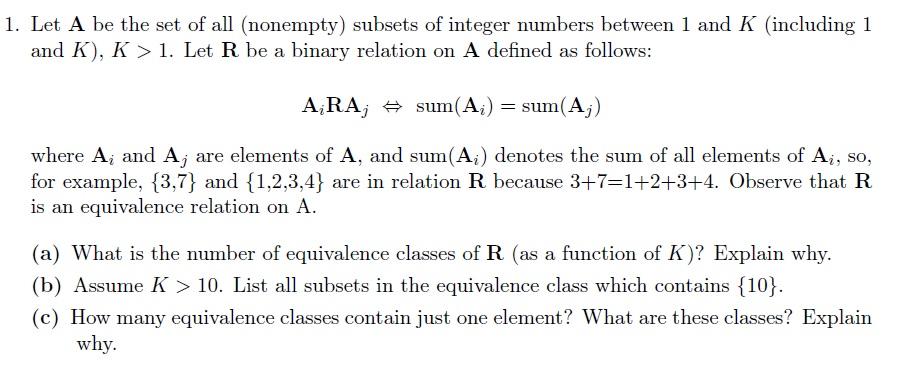Answered step by step
Verified Expert Solution
Question
1 Approved Answer
1. Let A be the set of all (nonempty) subsets of integer numbers between 1 and K (including 1 and K), K > 1.

1. Let A be the set of all (nonempty) subsets of integer numbers between 1 and K (including 1 and K), K > 1. Let R be a binary relation on A defined as follows: ARA, sum (A) = sum(Aj) where A; and A; are elements of A, and sum(A) denotes the sum of all elements of Ai, so, for example, {3,7} and {1,2,3,4} are in relation R because 3+7=1+2+3+4. Observe that R is an equivalence relation on A. (a) What is the number of equivalence classes of R (as a function of K)? Explain why. (b) Assume K > 10. List all subsets in the equivalence class which contains {10}. (c) How many equivalence classes contain just one element? What are these classes? Explain why.
Step by Step Solution
There are 3 Steps involved in it
Step: 1

Get Instant Access to Expert-Tailored Solutions
See step-by-step solutions with expert insights and AI powered tools for academic success
Step: 2

Step: 3

Ace Your Homework with AI
Get the answers you need in no time with our AI-driven, step-by-step assistance
Get Started


